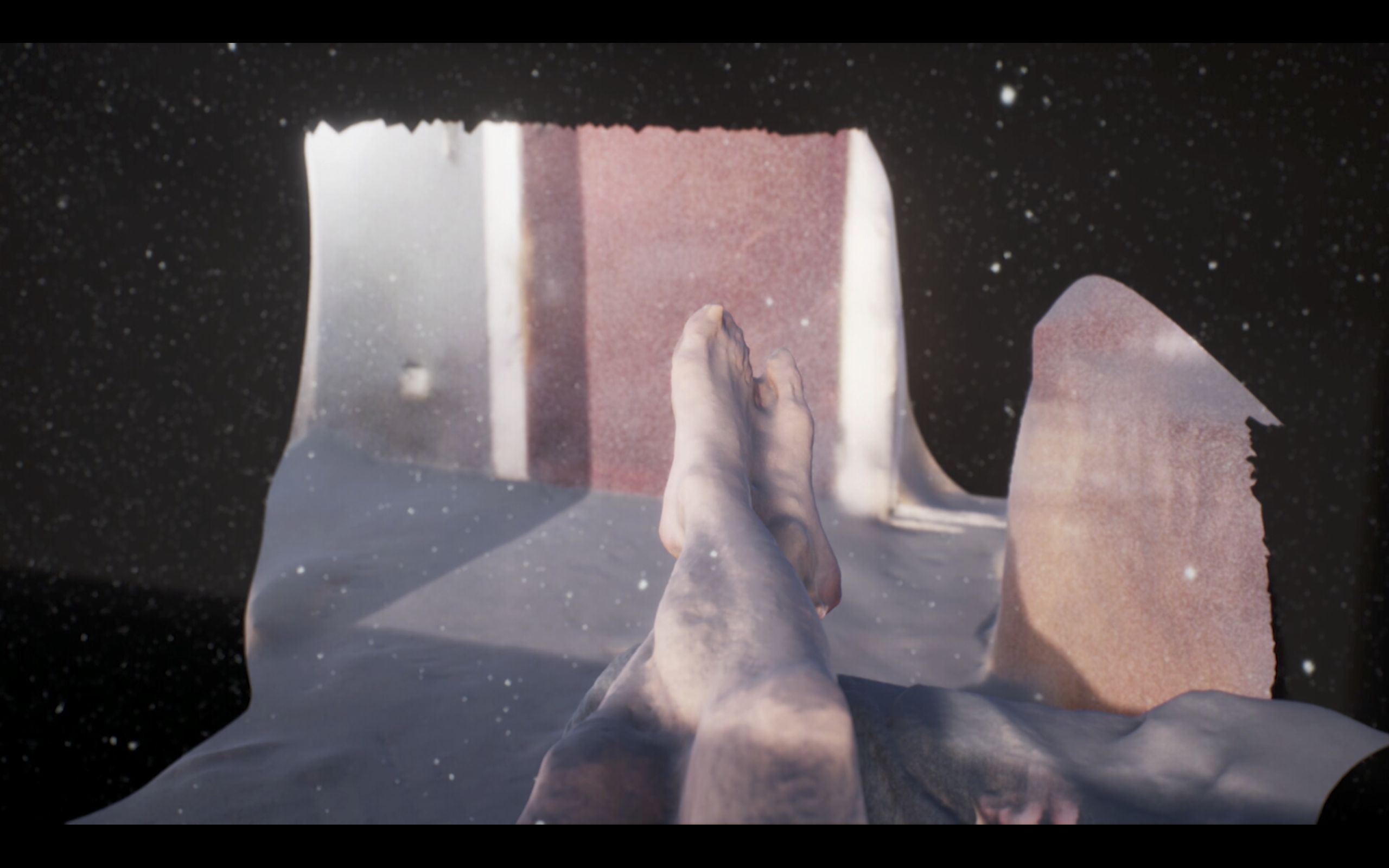




You and I Are on the Same Wavelength
As part of the event / We are open
We don’t usually consider our own hands and legs to be something which we’d observe for long. We simply have them, they’re ours, we depend on them, walk on them and grab glasses with their help so we can have a drink. On the contrary, there’s something weird and foreign about studying our own hand closely– as if with this prolonged attention it was changing into some kind of geological sample separated from us by a glass pane. I’m lying in bed, I have my legs in front of me, my head is empty, I’m trying to occupy my vision, I’m looking at the finger on my right foot…After a moment I feel distressed and need to poke my foot to make sure that it’s really mine. In psychological terms feeling a sense of non-reality towards oneself is called depersonalization. In the same way the surrounding world may seem unreal to us, for example when the voice of a person we otherwise know very well, seems mechanical and foreign. Depersonalization is often connected to derealization. Both states are characterized by a different perception of time, sometimes as if it had stood still, others as it were going at a furious rate. In an effort to describe the phenomenology of this state, people compare it to hallucinatory and dream visions, as well as the virtual world of theatre, film and also computer games. A man’s feet don’t even move on the screen, as if they were petrified. Equally motionless is a woman’s hand resting on a second monitor. Is it because they are virtual limbs and not the limbs of two real people? No, the feet are really virtual. And it isn’t just about feet, often virtual lives look much more alive than those that are really real. The idea that we are imprisoned in dialogues as generative as the discussion of two chatbots, and while we look at each of our own thumbs, we all fall into the dust. This really worries me, as if it were something we were truly endangered by.
Josef Ledvina



